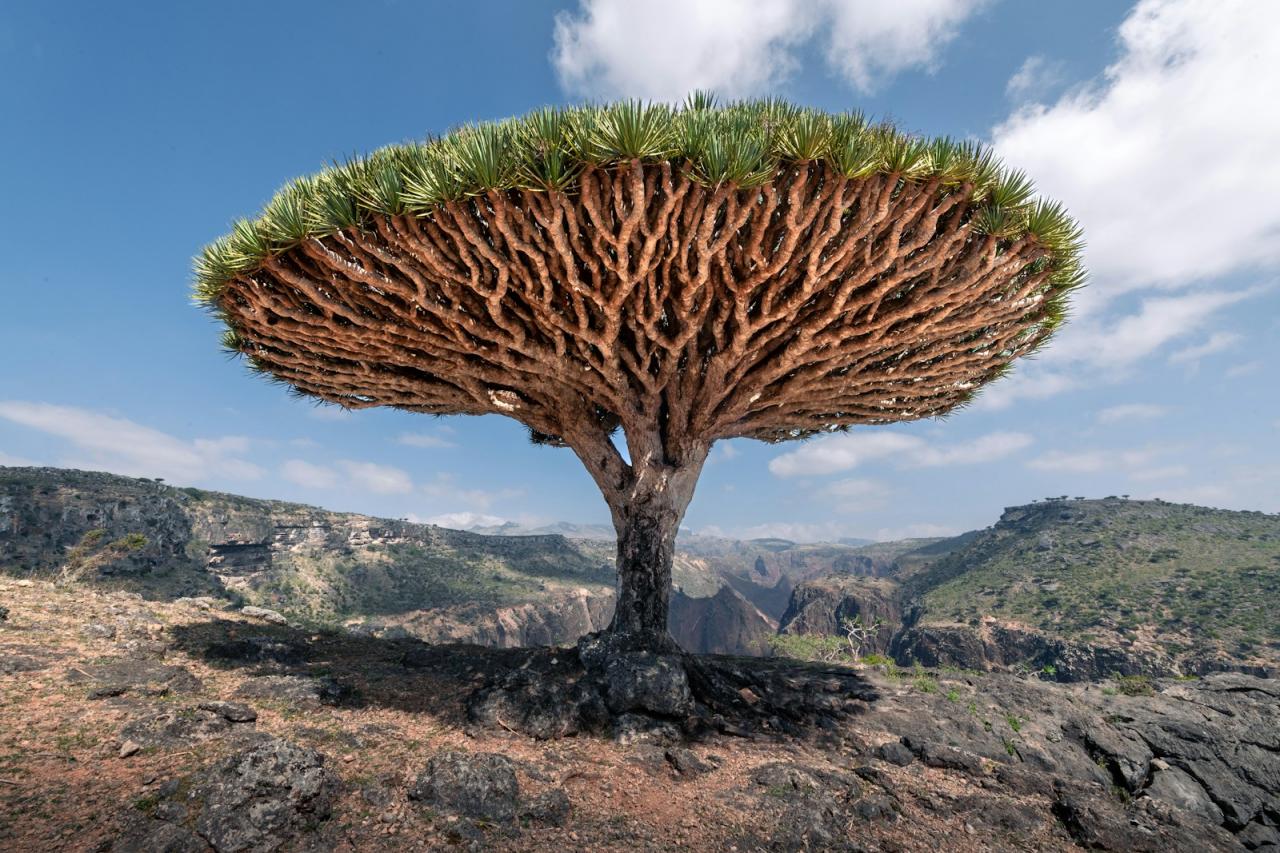
The woodlands and forests of our planet offer us great beauty and serenity, are vital habitats for our wildlife and produce valuable timber for a variety of uses.
Many forested regions are fantastic recreational areas and attract many visitors, some containing truly exceptional trees which have become tourist attractions in their own right.
Through their towering heights and timeless wisdom, iconic trees remind us of our shared responsibility to protect and preserve the precious ecosystems that sustain life on Earth. They are more than just botanical wonders; they are symbols of hope, resilience, and the enduring power of nature to overcome adversity.
These awesome specimens are a fantastic sight and well worth a visit! So here are 21 of the world’s mosticonic, majestic treeswhich you should consider making a trip to see.
The General Sherman Tree, USA
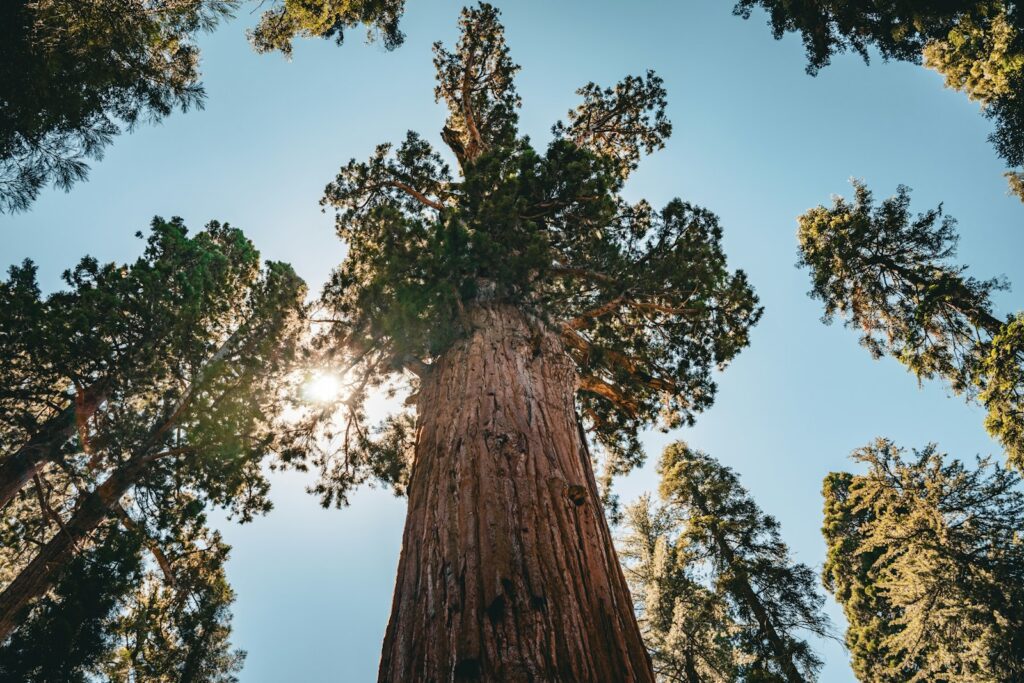
This enormous sequoia is the world’s largest living thing and is to be found inSequoia National Park, California. Giant sequoias only grow naturally in California.
The General Grant tree in Sequoia National Park and the Grizzly Giant in Yosemite National Park are other celebrated sequoia trees of enormous size.
- Although they are not the tallest trees on the planet, a combination of their incredible height and massive girth makes them the world’s largest species.
- The General Sherman is 275 feet tall and has a diameter of 11.1 metres at its base.
- The tree is now estimated to be approximately 2000 years old which surprisingly make it quite young as sequoias can live for over 3000 years.
Árbol del Tule, Mexico
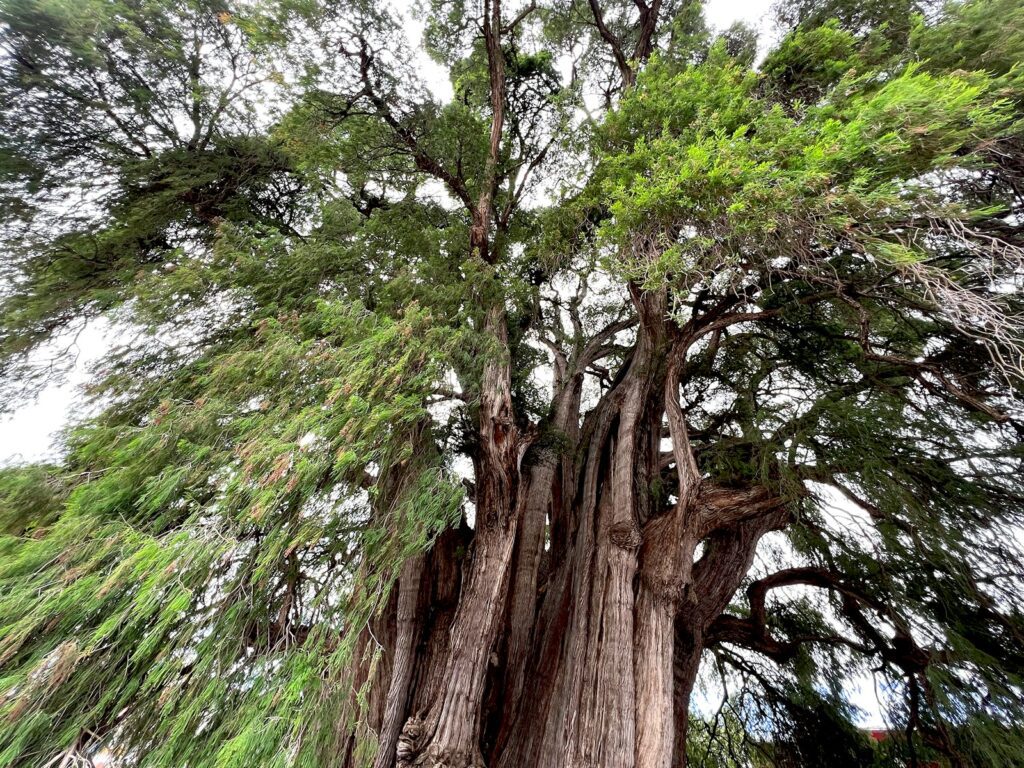
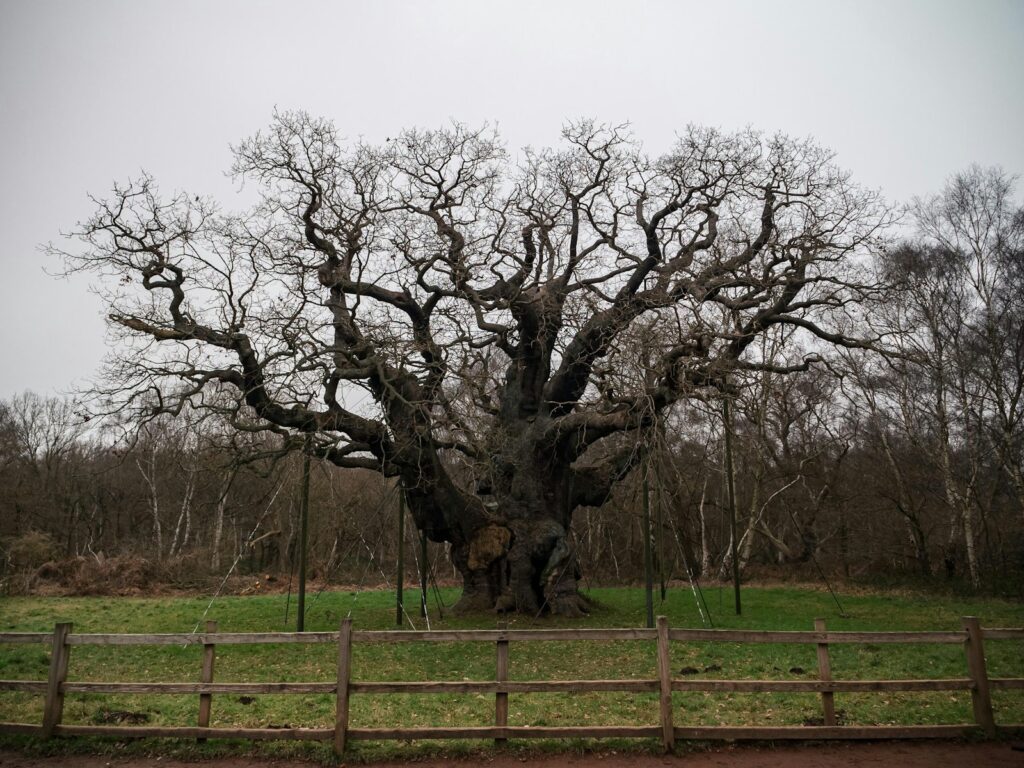
The Major Oak is situated near the village ofEdwinstowe in Sherwood Forest.
- It is the most visited tree in Britain and one of the most famous in the world.
- The tree is part of the legend of Robin Hood and is reputedly a place where he sheltered with his Merry Men.
- The huge oak could be over 800 years old and has a girth at the base of some 10 metres.
- Its unusual shape may be the result of several saplings fusing together to form what appears to be a single tree.
- The oak has been supported by scaffolding since Victorian times.
The Tree of Life, Bahrain
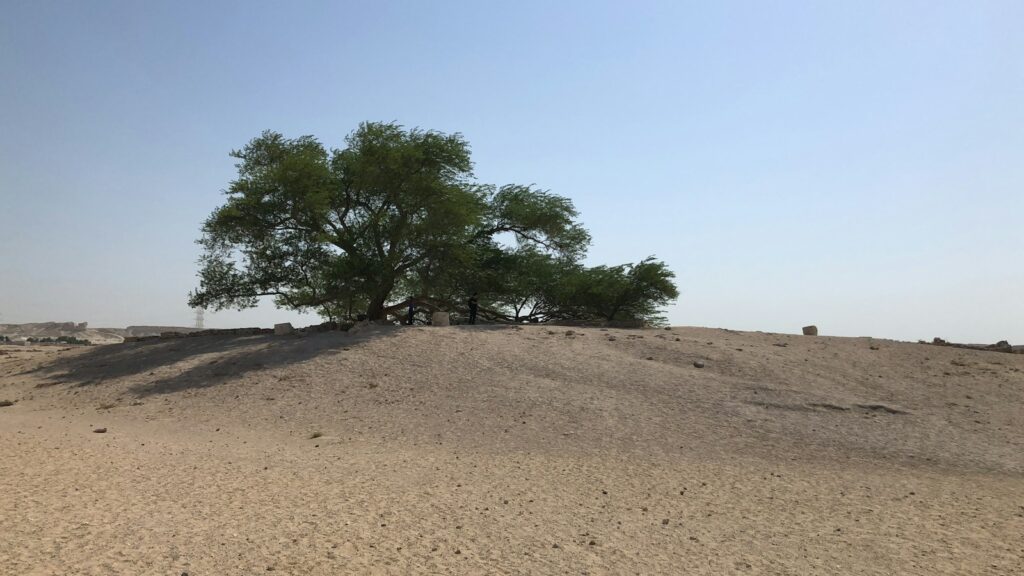
There can be few spectacles as amazing as the Tree of Life inBahrain.
- The mesquite is over 400 years old and is the only living green organism in the whole of the desert in which it grows.
- The area is entirely free of any water supply!
- The miraculous tree is visited by 50,000 people each year and is believed locally to be at the site of the Garden of Eden.
- It is not known how it has managed to survive but its roots may have found a source of water deep under the desert floor.
The Baobab, Madagascar
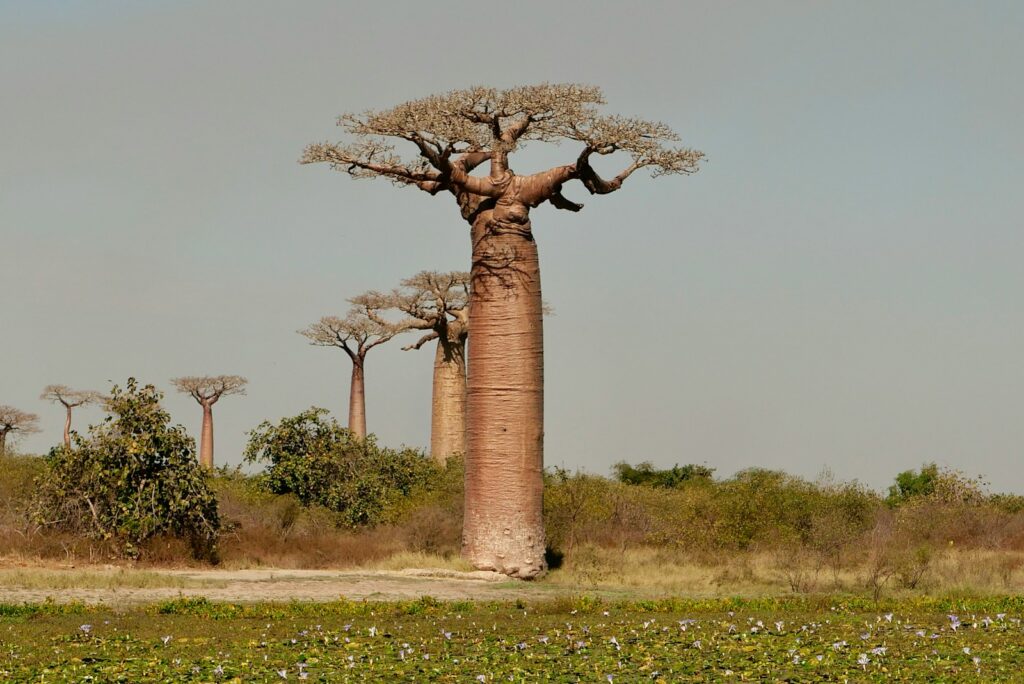
Known as the “Tree of Life” inMadagascar, the Baobab is an iconic symbol of the island’s unique flora.
- These majestic trees are scattered across the island’s landscape, but the Avenue of the Baobabs near Morondava is particularly famous for its stunning display of these ancient giants.
- The Baobab is renowned for its distinctive swollen trunk, which can store thousands of liters of water to endure the harsh arid conditions of the region.
- Some specimens are believed to be over 1,000 years old, making them some of the oldest living organisms on Earth.
- The Baobab serves as a vital resource for both humans and wildlife, providing food, water, shelter, and traditional medicine for local communities and ecosystems.
The Angel Oak, USA
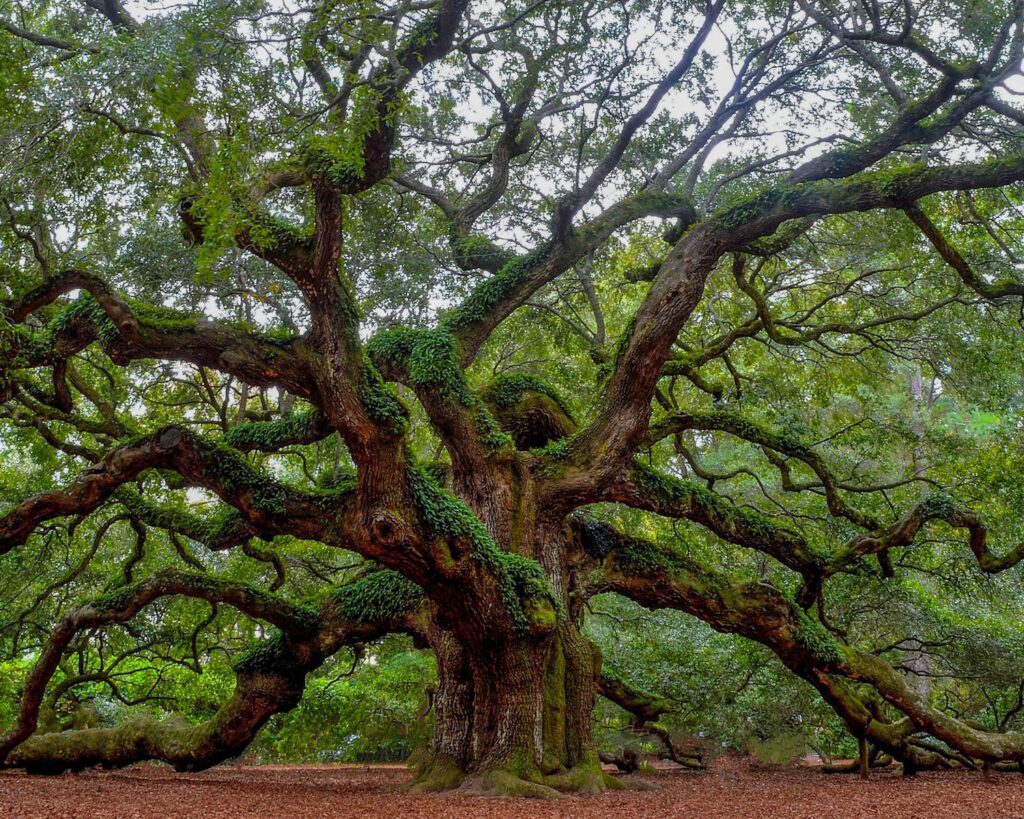
Located nearCharleston, South Carolina, the Angel Oak is a breathtaking Southern live oak (Quercus virginiana) estimated to be between 400 and 500 years old.
- Its massive, gnarled branches stretch gracefully over an area of 17,000 square feet, creating a captivating canopy that draws visitors from around the world.
- The tree’s name is derived from the Angel family, who once owned the land where it stands.
- Revered for its beauty and resilience, the Angel Oak has become a symbol of strength and endurance in the face of time and adversity.
Árbol del Tule, Mexico

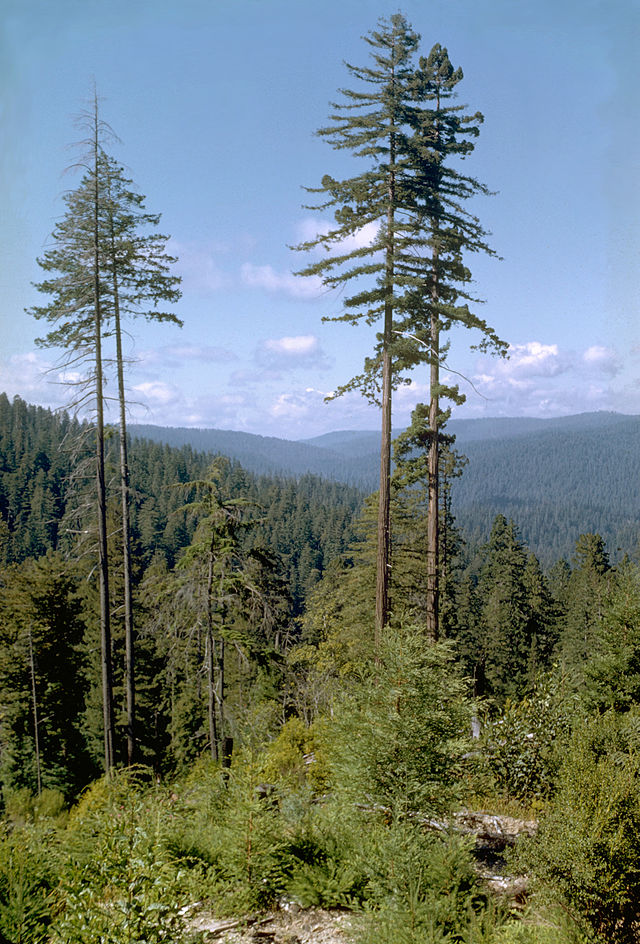
The tree stands in a remote area of theRedwood National Park in Californiaand is surprisingly growing on a slope and not in the valley where water is more abundant.
- This coast redwood (sequoia sempervirens) is the tallest tree in the world.
- Hyperion stands at a massive 379.7 feet (115.7 m) and was only discovered in 2006 by naturalists Chris Atkins andMichael Taylor.
- Incredibly the tree is still growing vigorously and may be only 600 years old, a relative youth in redwood terms.
The Banyan Tree, India
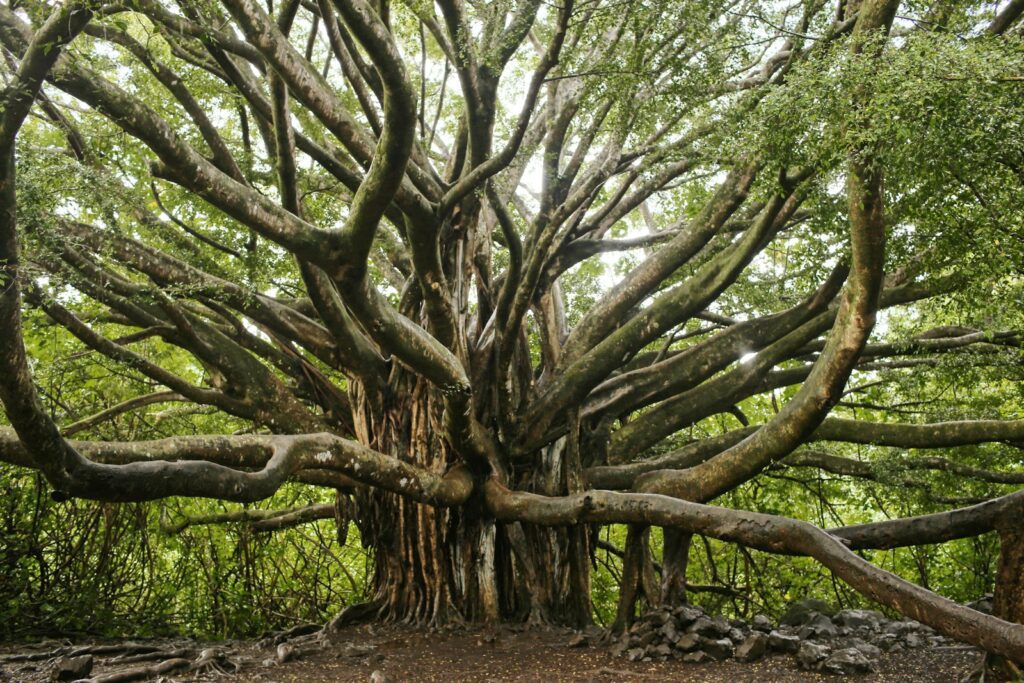
One of the most remarkable specimens can be found in theIndian Botanic Garden in Kolkata, West Bengal.
- Banyan trees (Ficus benghalensis) hold a special place in Indian culture and spirituality.
- Believed to be over 250 years old, this sprawling tree covers more than 14,000 square meters, making it one of the largest canopy trees in the world.
- Banyan trees are known for their unique growth habit, with aerial prop roots that extend from the branches to the ground, creating secondary trunks and a labyrinth of interconnected pathways.
- Revered as a symbol of longevity and wisdom, the Banyan tree continues to inspire awe and wonder among visitors and devotees alike.
The Cedars of God, Lebanon
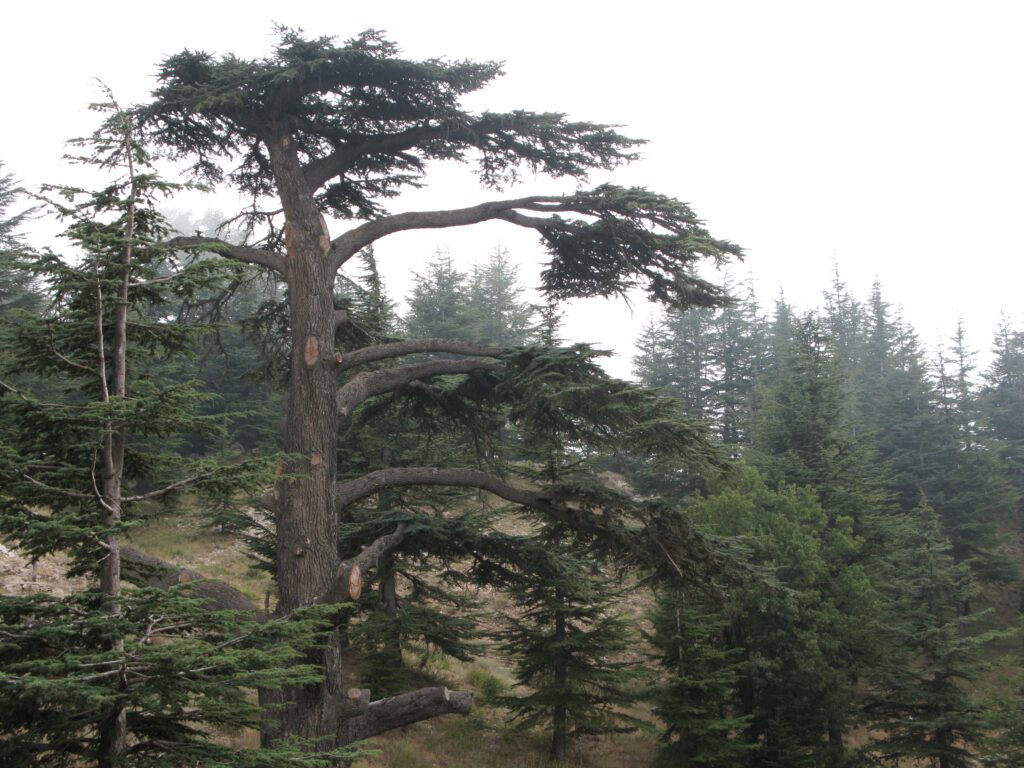
Located in the high mountains ofnorthern Lebanon, these ancient cedar trees have been revered for thousands of years for their majestic beauty, strength, and historical significance.
- The Cedars of God (Cedrus libani) stand as a timeless symbol of Lebanon’s natural heritage and cultural identity.
- Some of the oldest cedars are estimated to be over 2,000 years old, making them among the oldest known trees in the world.
- The Cedars of God have been mentioned in ancient texts, including the Bible, where they symbolize strength, stability, and divine protection.
- Despite centuries of human encroachment and deforestation, efforts to preserve and protect these iconic trees continue to this day, embodying the enduring spirit of Lebanon’s natural heritage.
The Dragon Blood Tree, Yemen

Endemic to theSocotra archipelago in the Indian Ocean, the Dragon Blood Tree (Dracaena cinnabari) is a striking symbol of biodiversity and resilience.
- Named for its crimson sap that resembles dragon’s blood, this iconic tree has adapted to thrive in the harsh, arid conditions of the island’s limestone plateaus.
- Its umbrella-shaped crown and gnarled branches evoke a sense of otherworldly beauty, attracting botanists, adventurers, and nature enthusiasts from around the globe.
- The Dragon Blood Tree plays a crucial role in the island’s fragile ecosystem, providing habitat and sustenance for a variety of endemic species.
- Despite its remote and isolated habitat, the Dragon Blood Tree faces threats from habitat loss, climate change, and invasive species, underscoring the importance of conservation efforts to safeguard this unique botanical treasure.
The Giant Baobab, Africa
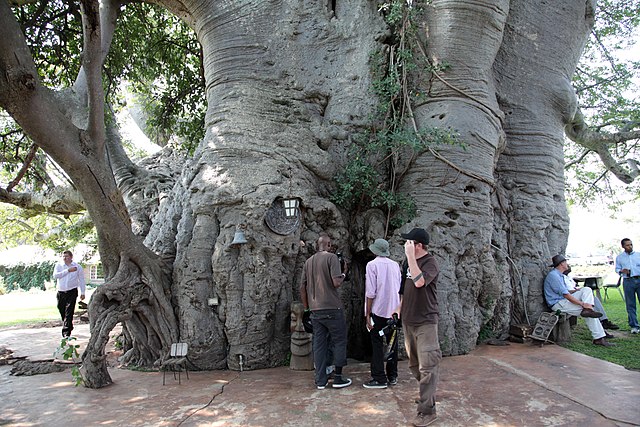 Image credit: https://en.wikipedia.org/wiki/Sunland_Baobab#/media/File:Sunland_Baobab,_Limpopo,_South_Africa_(5613316944).jpg
Image credit: https://en.wikipedia.org/wiki/Sunland_Baobab#/media/File:Sunland_Baobab,_Limpopo,_South_Africa_(5613316944).jpg
The Giant Baobab of Africa, located inLimpopo Province, South Africa, is estimated to be over 6,000 years old.
- The African Baobab (Adansonia digitata) is an iconic symbol of the African savannah, revered for its resilience, longevity, and cultural significance.
- It is often referred to as the “Tree of Life” for its vital role in sustaining both humans and wildlife.
- Its massive trunk can store thousands of gallons of water, making it a valuable resource during droughts.
- The hollowed interiors of mature baobabs have been used for centuries as shelters, meeting places, and even pubs.
- Despite their iconic status, many baobab populations are threatened by habitat loss, climate change, and overexploitation, highlighting the need for conservation efforts to protect these ancient giants for future generations.
The Chapel Oak, France
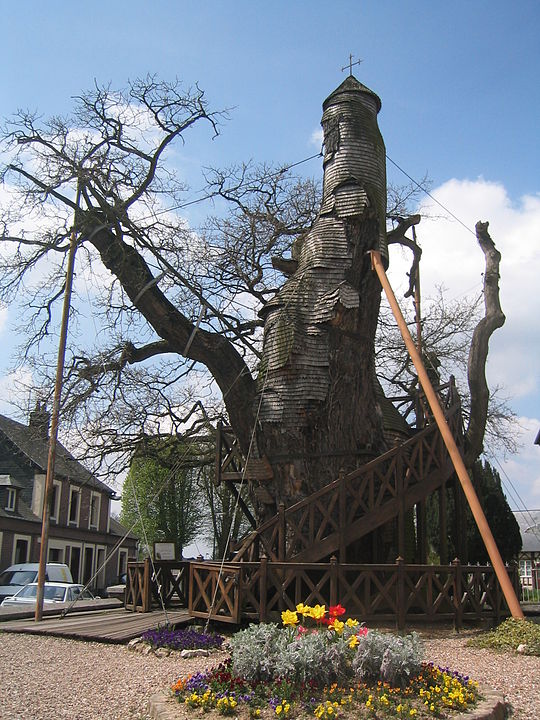
Located in the picturesque village ofAllouville-Bellefosse in Normandy, France,the Chapel Oak (Chêne d’Allouville) is a living testament to centuries of history, folklore, and faith.
- This ancient oak tree is estimated to be over 800 years old and is famous for its unique feature—a small chapel nestled within its hollow trunk.
- The Chapel Oak has survived wars, storms, and the passage of time, becoming a cherished symbol of resilience and continuity for the local community.
- Each year, thousands of visitors flock to Allouville-Bellefosse to marvel at this extraordinary living monument and to pay homage to the enduring spirit of nature and human ingenuity.
The Rainbow Eucalyptus, Indonesia
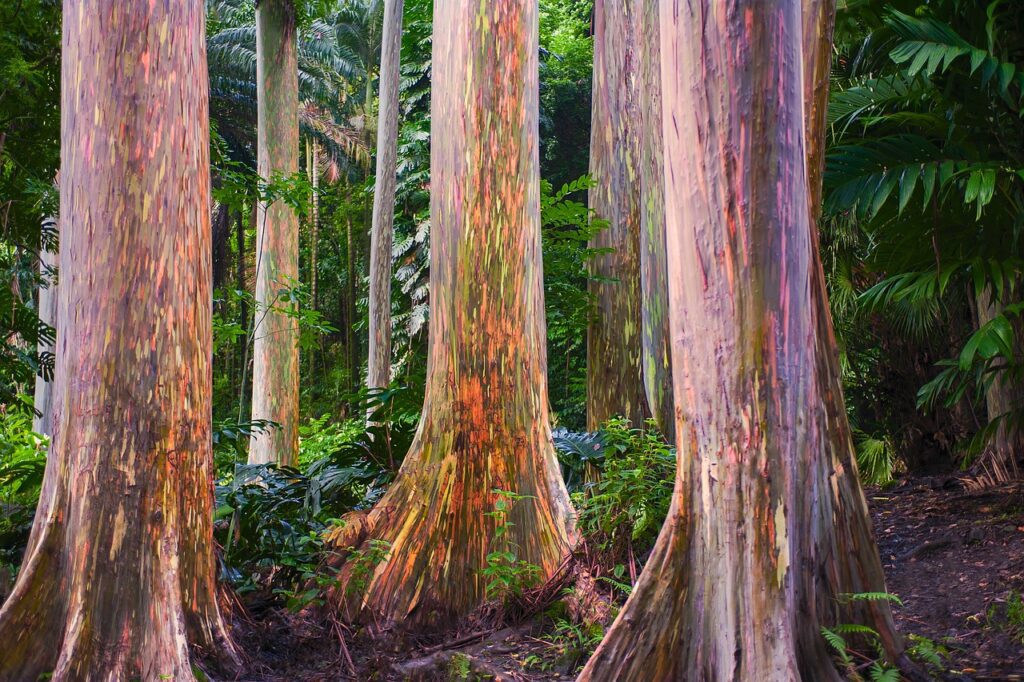
Native to the rainforests ofIndonesia, the Philippines, and Papua New Guinea, the Rainbow Eucalyptus (Eucalyptus deglupta) is renowned for its stunning multicolored bark, which peels away in strips to reveal vibrant hues of green, red, orange, and purple.
- This unique tree thrives in tropical climates with abundant rainfall and sunlight, where it can reach heights of over 200 feet.
- The Rainbow Eucalyptus is a symbol of biodiversity and natural beauty, attracting photographers, artists, and nature lovers to behold its kaleidoscopic splendor.
- Despite its ornamental appeal, the Rainbow Eucalyptus also serves practical purposes, providing timber for construction, pulp for papermaking, and essential oils for medicinal and aromatic applications.
- As tropical forests face increasing pressures from deforestation and climate change, the conservation of the Rainbow Eucalyptus and its habitat is essential to preserving the rich tapestry of life in these vital ecosystems.
The Montezuma Bald Cypress, Mexico
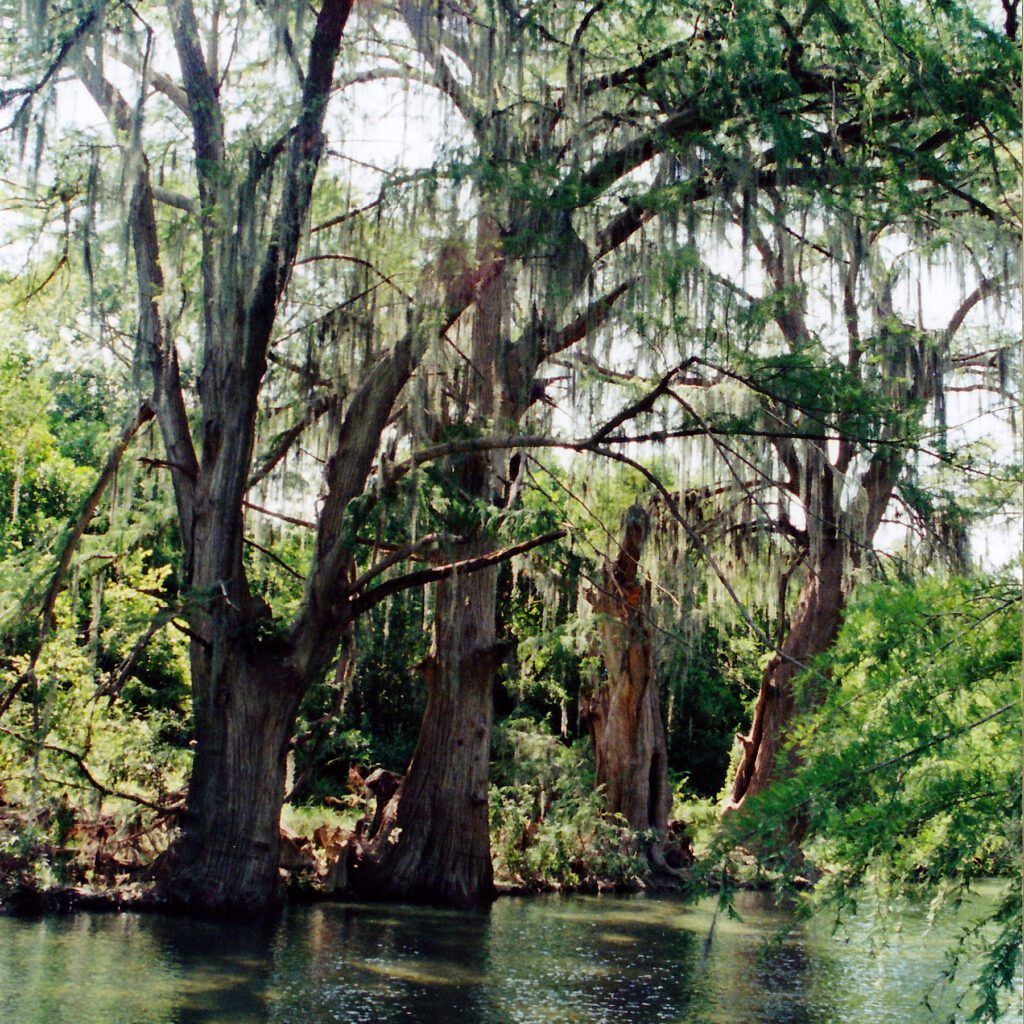
The Montezuma Bald Cypress (Taxodium mucronatum) is an iconic symbol ofMexico’swetland ecosystems, where it thrives along riverbanks, lakeshores, and marshes.
- Named after the Aztec emperor Montezuma, this majestic tree is revered for its graceful form, delicate foliage, and resilience in waterlogged environments.
- The Montezuma Bald Cypress can reach towering heights of over 50 meters and live for centuries, providing habitat for a diverse array of wildlife and stabilizing the fragile ecosystems of Mexico’s riparian zones.
- The tree’s distinctive “knees,” or pneumatophores, emerge from the waterlogged soil, helping to aerate the roots and anchor the tree in muddy substrates.
- Despite facing threats from habitat loss, pollution, and climate change, the Montezuma Bald Cypress continues to inspire awe and admiration as a symbol of natural beauty and ecological resilience in the heart of Mexico.
The Redwoods of Muir Woods, USA
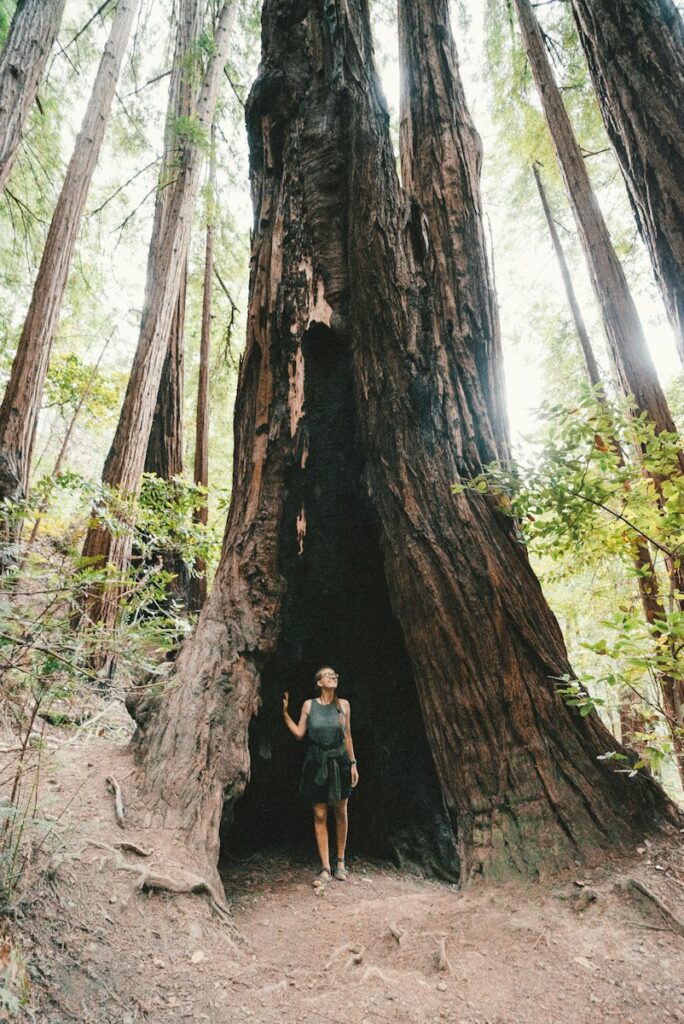
Muir Woods National Monument, located just north ofSan Francisco, California, is home to some of the tallest and oldest trees on Earth.
- The coast redwoods (Sequoia sempervirens) that inhabit this pristine forest stand as living monuments to the majesty and resilience of nature.
- Towering over 350 feet in height, these ancient giants have withstood the test of time, enduring for thousands of years in a rapidly changing world.
- Walking among the towering redwoods of Muir Woods is a humbling experience, as visitors are transported back in time to an era when giants roamed the Earth.
- These magnificent trees serve as a reminder of the importance of conservation and stewardship, inspiring us to protect and preserve our natural heritage for future generations.
The Tāne Mahuta, New Zealand
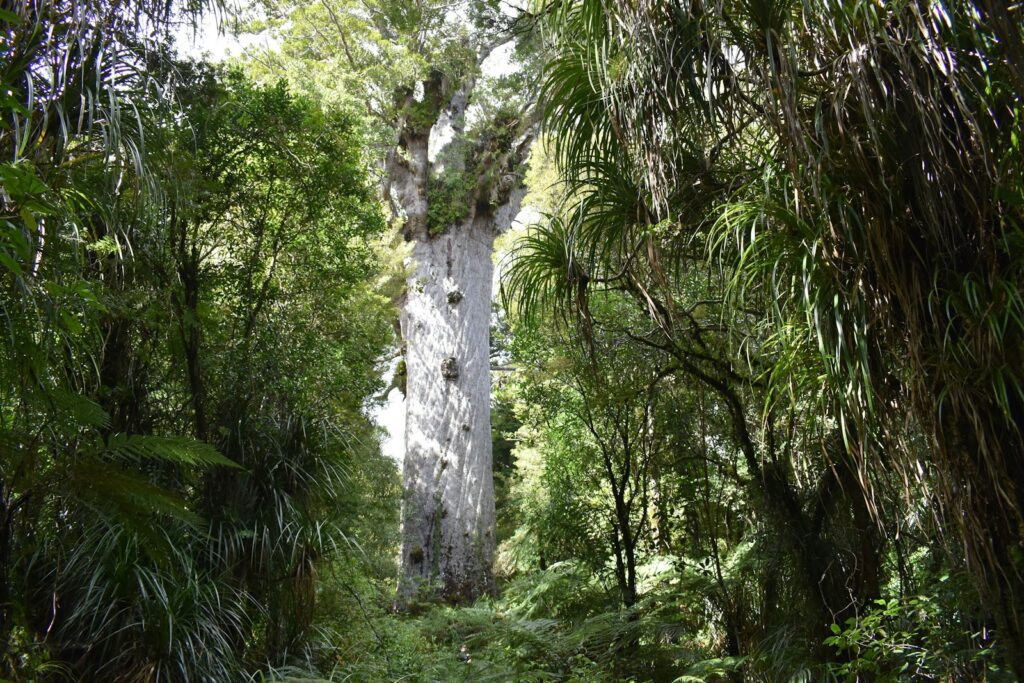
Deep within the ancient forests ofNew Zealand, Tāne Mahuta stands as a silent sentinel of the natural world.
- This giant kauri tree (Agathis australis) is revered by the Māori people as a living ancestor and guardian of the forest.
- With a height of over 51 meters and a girth of over 13 meters, Tāne Mahuta is one of the largest kauri trees in existence, estimated to be over 2,500 years old.
- Its towering presence and majestic beauty inspire reverence and awe among all who encounter it, serving as a symbol of the interconnectedness of all living beings.
- Tāne Mahuta’s name, which means “Lord of the Forest” in Māori, reflects its status as a spiritual and cultural icon, reminding us of the importance of respecting and protecting the natural world that sustains us all.
How Tall Are These Trees?
Below is a summary of the estimated maximum height of each of the beautiful trees we have described:
| Hyperion | 116 | 381 | Redwood National Park, California, USA | Western North America |
| Árbol del Tule | 102 | 336 | Yarlung Zangbo Grand Canyon, Tibet, China | East Asia |
| The General Sherman Tree | 84 | 275 | Sequoia National Park, California, USA | Western North America |
| Major Oak | 23 | 76 | Sherwood Forest, Nottinghamshire, UK | Europe |
| The Tree of Life | 9.75 | 32 | Bahrain | Middle East |
| The Baobab | 30 | 98 | Madagascar | Africa |
| The Angel Oak | 20 | 65 | Angel Oak Park, South Carolina, USA | North America |
| The Banyan Tree | 30 | 98 | India | South Asia |
| The Cedars of God | 40 | 130 | Lebanon | Middle East |
| The Dragon Blood Tree | 9.1 | 30 | Socotra Island, Yemen | Middle East |
| The Giant Baobab | 23 | 75 | Africa | Africa |
| The Chapel Oak | 15 | 49 | Allouville-Bellefosse, France | Europe |
| The Rainbow Eucalyptus | 60 | 200 | Indonesia | Southeast Asia |
| The Montezuma Bald Cypress | 30 | 100 | Oaxaca, Mexico | North America |
| The Redwoods of Muir Woods | 79 | 258 | Muir Woods National Monument, California, USA | Western North America |
| The Tāne Mahuta | 51 | 49 | Waipoua Forest, Northland, New Zealand | Oceania |
Great Trees
These are just a few of the incredible trees which populate our planet. In a world marked by rapid environmental change and ecological uncertainty, the stories of these iconic trees serve as beacons of hope and inspiration, reminding us of the power of nature and the impact that individual trees can have on the world around them.
As we continue to navigate the challenges of the 21st century, let us remember the lessons of these ancient sentinels and strive to protect and preserve our planet’s natural heritage for future generations to enjoy and cherish. No tree lives forever so pay a visit to these magnificent beasts before they topple and are gone forever.



